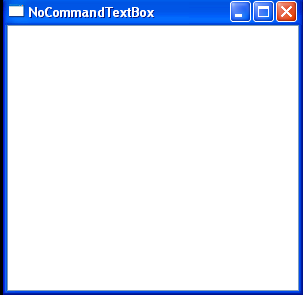Add ApplicationCommands.Cut to TextBox with TextBox.CommandBindings

<Window x:Class="Commands.NoCommandTextBox"
xmlns="http://schemas.microsoft.com/winfx/2006/xaml/presentation"
xmlns:x="http://schemas.microsoft.com/winfx/2006/xaml"
Title="NoCommandTextBox" Height="300" Width="300">
<Grid>
<TextBox Name="txt"/>
</Grid>
</Window>
//File:Window.xaml.vb
Imports System
Imports System.Collections.Generic
Imports System.Text
Imports System.Windows
Imports System.Windows.Controls
Imports System.Windows.Data
Imports System.Windows.Documents
Imports System.Windows.Input
Imports System.Windows.Media
Imports System.Windows.Media.Imaging
Imports System.Windows.Shapes
Namespace Commands
Public Partial Class NoCommandTextBox
Inherits System.Windows.Window
Public Sub New()
InitializeComponent()
txt.CommandBindings.Add(New CommandBinding(ApplicationCommands.Cut, Nothing, AddressOf SuppressCommand))
End Sub
Private Sub SuppressCommand(sender As Object, e As CanExecuteRoutedEventArgs)
e.CanExecute = False
e.Handled = True
End Sub
End Class
End Namespace
Related examples in the same category